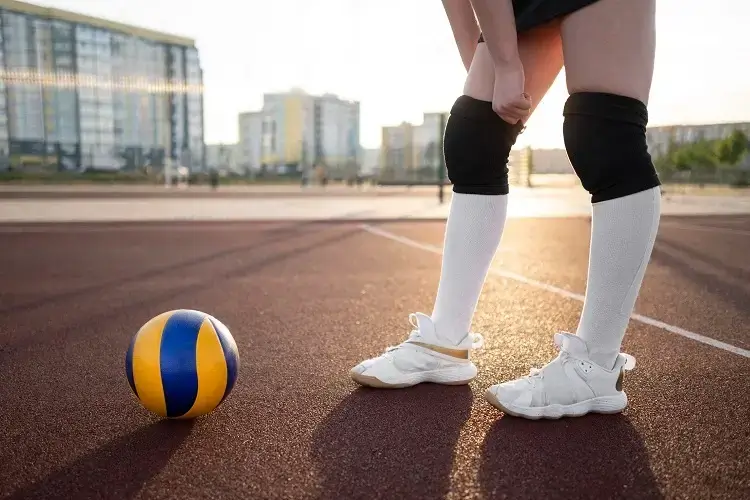
Baseball is a beloved sport that has been played for over a century. From Little League to the major leagues, it is a game that requires skill, strategy, and physical strength. However, with the constant throwing, running, and sliding, injuries are an inevitable part of the game. Whether you’re a seasoned player or just starting, it’s important to understand how to prevent, treat, and recover from injuries in baseball. This blog post will discuss some common baseball injuries and provide tips on staying healthy and on the field.
Understanding the Common Injuries in Baseball
In baseball, players frequently encounter a range of injuries due to the sport’s demands. Rotator cuff tears and shoulder impingements are common among pitchers, resulting from repetitive throwing motions. Elbow injuries, such as ulnar collateral ligament (UCL) tears, also afflict pitchers, often leading to Tommy John surgery for repair. Hitters and fielders may suffer from hand and wrist injuries like fractures or tendonitis. Sliding into bases usually results in knee and ankle sprains. Additionally, hamstring strains are prevalent due to the explosive running required. Recognizing these common injuries can guide prevention and treatment strategies.
The Importance of Warm-Ups and Conditioning
Prioritizing warm-ups and conditioning is crucial in baseball to enhance performance and minimize injury risks. Dynamic warm-ups that activate the muscles used in baseball – such as the shoulders, arms, and legs—prepare the body for the game’s physical demands. Likewise, a well-rounded conditioning program that includes strength training, flexibility exercises, and agility drills can build the resilience to withstand a long season. Incorporating these practices into a routine improves overall athleticism and equips players with the physical foundation necessary to execute baseball skills safely and effectively.
Equipment and Protective Gear
Using the correct equipment and protective gear is pivotal in preventing injuries in baseball. Helmets provide crucial head protection for batters and base runners, reducing the risk of concussions. For catchers, a full set of gear, including a helmet, chest protector, and leg guards, is essential to safeguard against fast-moving pitches and foul balls. Additionally, using a high-quality set of baseball bases that are properly secured and have a breakaway feature can minimize the risk of ankle and knee injuries during sliding. Gloves and padding can protect fielders and batters from hand and wrist injuries, emphasizing the significance of choosing the right gear for safety and performance.
Immediate Actions Following an Injury
When an injury occurs on the baseball field, prompt action is vital. Initially, cease all physical activity to prevent further harm. Employ the RICE method – Rest, Ice, Compression, and Elevation – to manage swelling and pain. For severe injuries, such as suspected fractures or significant pain, seek medical attention immediately. It’s essential to accurately assess the injury’s severity early on, as ignoring or mistreating it could lead to longer recovery times or compounded issues. Always prioritize health and safety over returning to play quickly.
Physical Therapy
Physical therapy plays a pivotal role in recovery, helping athletes regain strength and flexibility while ensuring the injury heals correctly. Customized rehabilitation programs focus on the specific needs of the baseball player, addressing the injury at hand and preventing future occurrences. Through targeted exercises and techniques, physical therapists aid in restoring function and enhancing performance levels. This tailored approach ensures a safer and more efficient return to the field, emphasizing restoring the player’s abilities and confidence in their physical health.
Strategies for Safe Return to Play
Ensuring a safe return to baseball after an injury involves a gradual approach. Begin with low-impact activities and slowly reintroduce baseball-specific drills, monitoring for any discomfort or signs of re-injury. Communicating openly with healthcare providers and coaches about any limitations or concerns is crucial. A successful return is essential to adhering to a personalized recovery plan and not rushing the process. Additionally, continuing with strength and conditioning exercises can help maintain physical preparedness and prevent future injuries, allowing players to confidently step back onto the field.
In conclusion, injury prevention, treatment, and recovery are crucial elements of playing baseball safely and effectively. Players can greatly reduce their risk of getting hurt by understanding common injuries, prioritizing warm-ups, conditioning, and using appropriate gear. Immediate and proper responses to injuries and professional guidance during recovery are essential for a triumphant return to the game. Remember, maintaining a healthy, strong, and flexible body is the best defense against the physical demands of baseball. Stay informed, stay prepared, and enjoy the game you love with confidence and resilience.